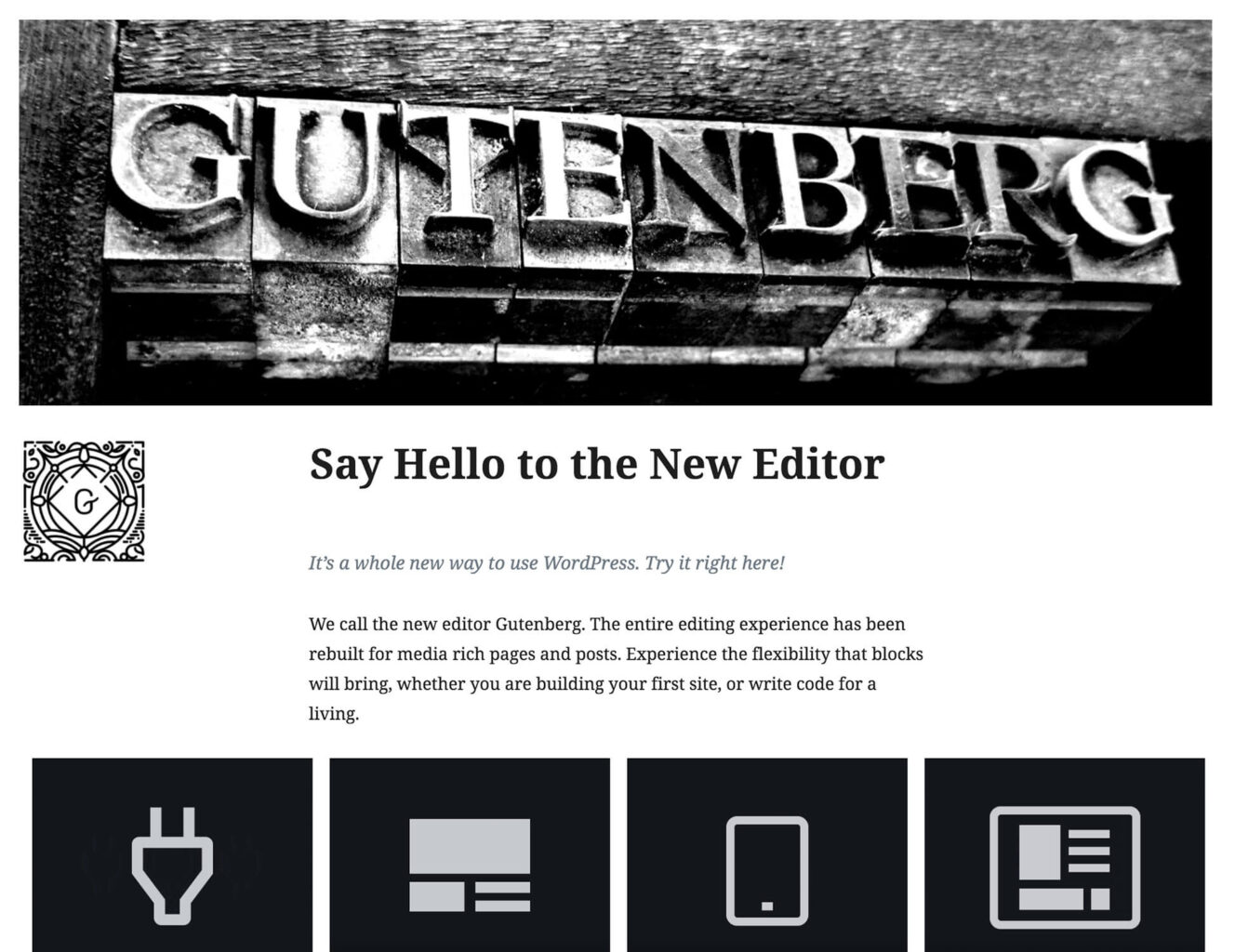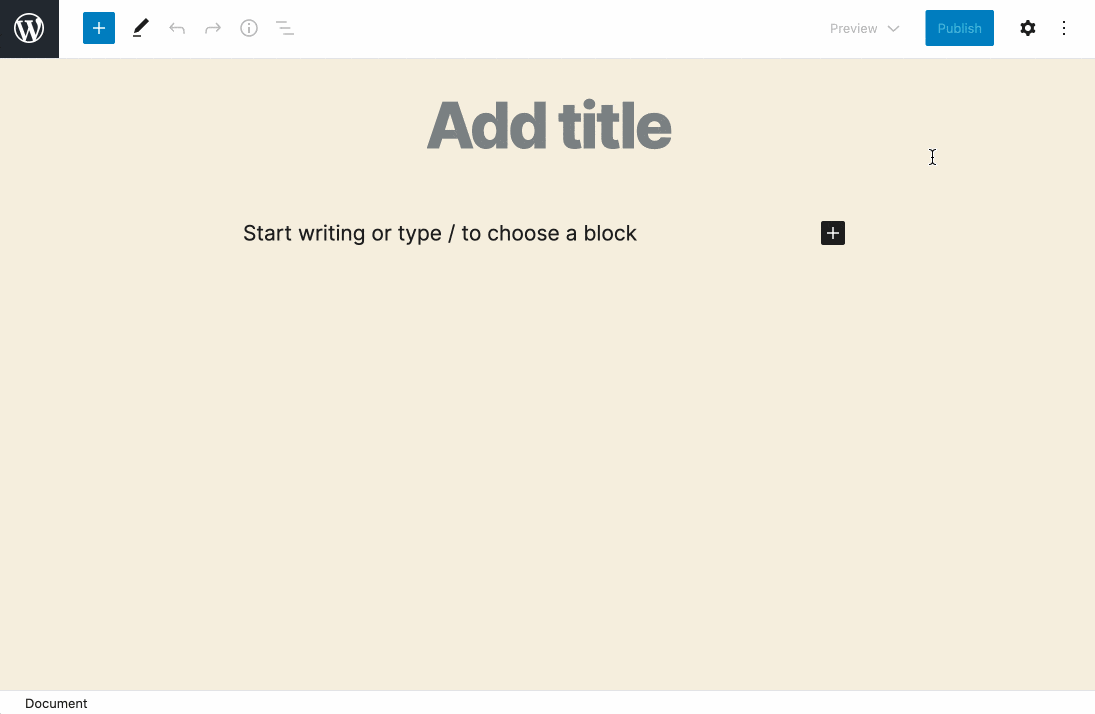Time to consider ditching trusty classic editor and embrace Gutenberg?
The popular blogging platform, WordPress, has been around for almost 20 years now, and it powers a staggering 32% of all the websites available on the web. For seasoned WP users, the classic editor (CE) has been the preferred method for creating blog posts for much of that time.
As with any other technology, it is making a drastic change and sometimes this proves to be a painful process. However, it is necessary to rip off the band-aid fast in most situations, even though it may hurt at first.
Since WP 5.0, a new editor, Gutenberg (new editor), has been available as an alternative to the CE.
The new editor has generated a fair amount of talk within the blogging community, with some supporting it while others stick decidedly to the old editor. A fair number of long-term WP users claimed that the new editor was released at an inconvenient period in the platform's history. The new editor's development created such a furore in the community that some members sought to block the new editor from making it to the final release of WP. However, the time has come for the platform's users to embrace change.
Here we are, with two options, to switch to Gutenberg or stick to the CE.

WP's core files haven't been changed much in the last couple of years, but the new editor's introduction promises to be the dawn of a new era in the blogging platform's history.
The new editor is designed to provide dedicated WordPress users with a means to curate enjoyable, vibrant, and simple blog content quickly, and it is living up to this concept pretty well so far.
Five hundred years ago, Johannes Gutenberg invented the printing press, the intelligent machine incorporating adjustable functionality and dynamic aesthetics. The new editor was named after this great inventor. The new editor is specially designed to eliminate the need for HTML and shortcodes to execute tasks within WP rapidly, making the process much more comfortable than before for newcomers and seasoned veterans alike.
Furthermore, "little blocks" incorporated in the new editor's design promise to enhance layout options and extend the site's overall functionality.
The new Gutenberg editor features several interesting enhancements from the (CE):
When a user is faced with a task such as adding buttons or tables using the classic editor, it may prove a challenge if one lacks some coding experience.
However, thanks to the developers' foresight, numerous handy plugins can be utilized to eliminate such issues. On the other hand, the new editor completely removes the need for plugins and other sources of headaches for bloggers.
The new editor was created with the sole purpose of enabling WP users to craft engaging and productive content quickly. It allows users without CSS and HTML knowledge to create dynamic and intriguing content.
Taken by itself, a block in the new editor doesn't do much. However, when these blocks are assembled, they fit together like well-crafted puzzle pieces to produce beautiful, cohesive content.
To make things easier, once you understand how to use a single block, you have mastered the new editor's intricacies.


As with any new idea or concept, some do not like the new editor and its offerings. That's okay too. There is no law (that I know of!) that requires you to use the new editor. For users who prefer to do things the old, tried and tested way, there's a handy CE plugin designed to disable the new editor and revert your interface to the CE.
In many ways, the CE features few distractions in the form of a plain window. In stark contrast, the new editor is a dynamic and interactive framework that utilizes blocks as an invigorated and modernized way to create content. The CE, with its blank canvas approach, becomes complicated when users have to add complex elements such as images, embeds, and shortcodes to their posts.
The new editor features full drag and drop content creation, where users can quickly pick up a content block and drop it elsewhere on the page in a jiffy. In addition to this, the new editor enables all manner of experimentation in the content creation process, including various image placement techniques. You can even opt to craft full-width images that give your pages a fresh, appealing look.
When it comes to making it easy for seasoned users and newbies to create engaging, dynamic content, including complex elements, the new editor wins hands-down. Furthermore, the new editor does not require third-party plugins to finish tasks such as adding contact forms and tables. In the end, this translates to less time spent creating blog posts and more time sourcing fantastic content.
For this very blog post, we have used the Gutenberg editor. It has been a pleasure to use and has come such a long way since its introduction back in late 2018.
If you are one of the WordPress users who feel the need to cling to the past and stick to what you know, then here are further reasons to consider switching to the new editor:
Many experienced developers are already making the transition to the new editor due to the increasing integration of WordPress with enhanced JavaScript libraries such as React.js. The incredibly rich and dynamic user experiences that such libraries bring to the platform are simply unmatched.
The new block-based technique of creating content is bound to get grow in popularity and more become advanced. Numerous plugins currently available in WP need updating so that they are compatible with the new editor. In a way, this is an exciting opportunity for those new to the ecosystem.
It wouldn't be fair if we failed to take into account one or two disadvantages of using the new editor:
• Web Developers and users who are accustomed to APIs in developing plugins and themes may find the new editor's beta version to be a bit inaccessible.
• The incompatibility of the new editor with the many plugins and themes currently available is sure to be an issue for many users and theme developers.